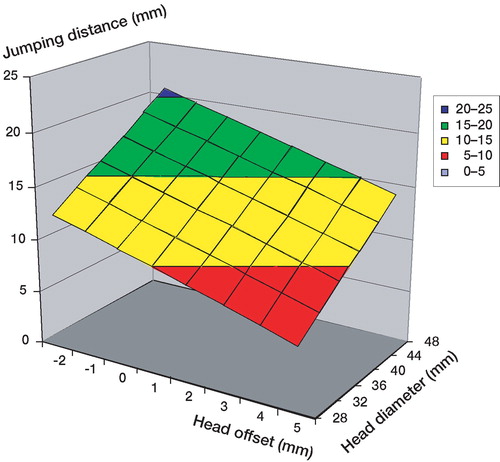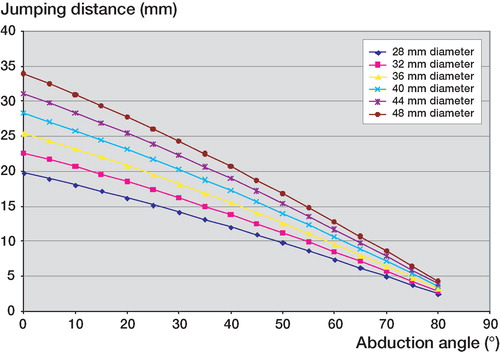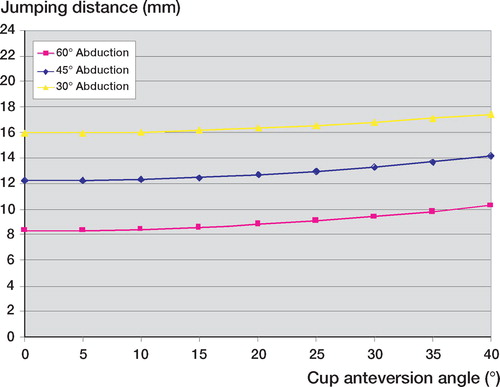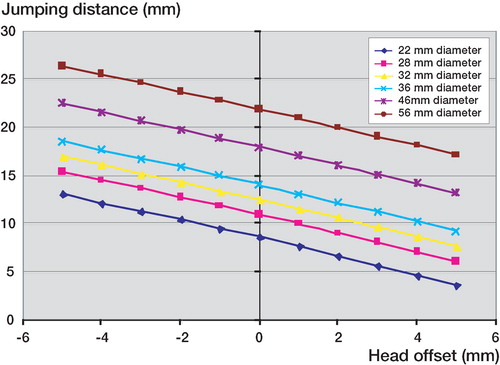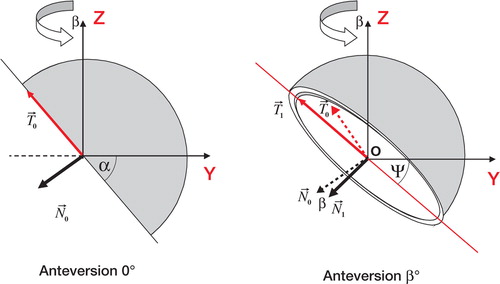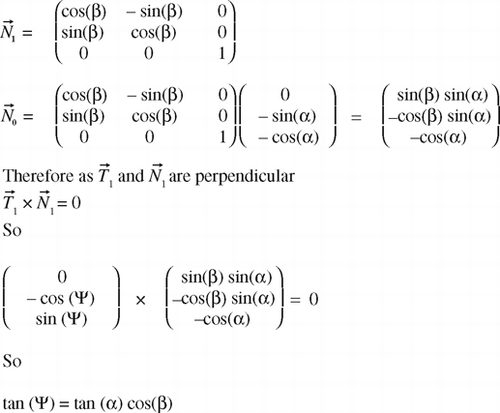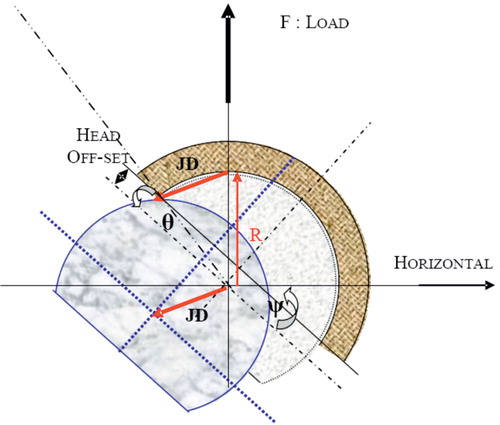Figures & data
Figure 1. The jumping distance is the lateral translation (AB) of the center of the femoral head (t) before dislocation occurs. F is the load force and y is the planar cup inclination angle measured in the frontal plane.
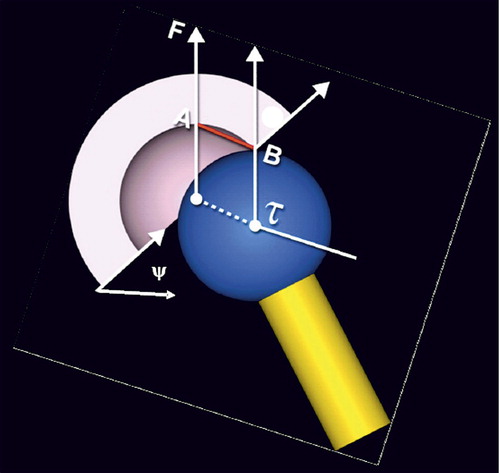
Figure 2. Definition of the angular parameters used for positioning of the cup. O is the center of the cup, Oz is the cranio-caudal axis, Oy is the lateral-medial axis, and Ox is the postero-anterior axis. Starting at the reference position (I), a first rotation of value a (cup abduction angle) is performed around the anterior-posterior axis (II). A second rotation of value b (cup anteversion angle) is performed around the cranialcaudal axis (III).
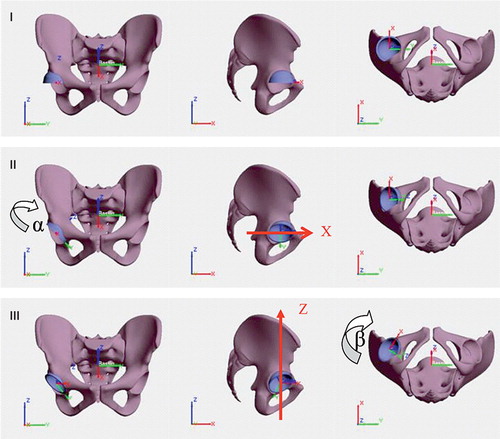
Figure 3. The femoral head offset is the distance from the center of the head (O) to the opening plane of the cup (purple line). If the head center is outside the cup, the offset is positive (A); otherwise it is negative and is called inset (B). The use of large heads above 38 mm in diameter generally imposes the use of an offset because the cup is usually a truncated hemisphere of 165° for the large heads.

Figure 6. Combined influence of head offset and diameter on the jumping distance. 45° abduction and 15° anteversion cup angles are used.
